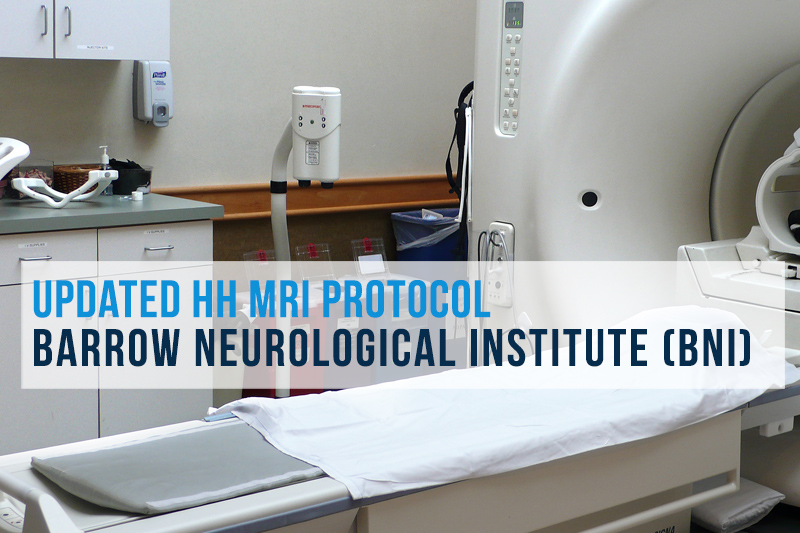Hypothalamic Hamartomas can be very difficult to diagnose for many reasons. Gelastic seizures may be misinterpreted as normal childlike behavior or laughter. They may also be diagnosed as colic, or acid reflux, and sometimes they may be thought to be autistic tendencies or simply something unexplainable – as in just a quirky child!
One of the key factors used in determining the presence of an HH lesion is the high-resolution Magnetic Resonance Image or MRI. However, even an MRI can be a challenge to read for even very experienced radiologists, due to the location and size of the HH itself. HH lesions are not always large, and can in fact be quite small, yet they may result in a significant number of seizures types and frequency. HH’s may be as small as a few millimeters to as large as a few centimeters in size. The smaller lesions often go undetected and therefore gelastic seizures may be incorrectly ruled out.
The experienced HH Team at Barrow Neurological Institute (BNI) has developed an MRI protocol (download approved HH MRI Protocol) they recommend if an HH is suspected. They have modified this protocol over time based on the 100’s of HH patients they have treated. We suggest, if you or your child are being screened for HH, take this protocol along with you to your appointment and have a conversation with the neurologist or provider requesting the MRI.
We here at Hope for HH have heard from many families over the years that were told initially that their loved one did NOT have an HH – only to redo the MRI and discover there was indeed a very small HH. The correct protocol and having an experienced radiologist that understands HH reading the scans can be the difference between a delayed or incorrect diagnosis and the proper diagnosis in minimum time.
HH MRI PROTOCOL*
Pre-operative studies
- 3D T1W SPGR, axial 0.9mm isotropic voxels (Updated 04/2020)
- Sag T1W – min TE; 3mm slice, 0.5mm gap; FOV 20cm
- Sag T2W(FSE) – 2mm slice no gap; FOV 20cm
- Cor T2W(FSE) – 2mm slice no gap; FOV 16cm
- Cor T1W – 3D SPGR; 2mm slice; FOV 24cm – recon for axial
- Axial T2W(FSE) – routine brain
Contrast may be necessary for first evaluation to exclude other lesions Sagittal and Coronal T2 are critical sequences. Need whole brain cortical evaluation to exclude other cause for seizure activity for initial diagnosis.
Follow-Up MRI Protocol
Routine brain MRI using high resolution sagittal & coronal T2 thin slices without contrast
To understand more about some of the other tools used to diagnose HH, go to our website and learn more.
*Reprinted with permission from the Hypothalamic Hamartoma Center at Barrow Neurological Institute, Phoenix, AZ






